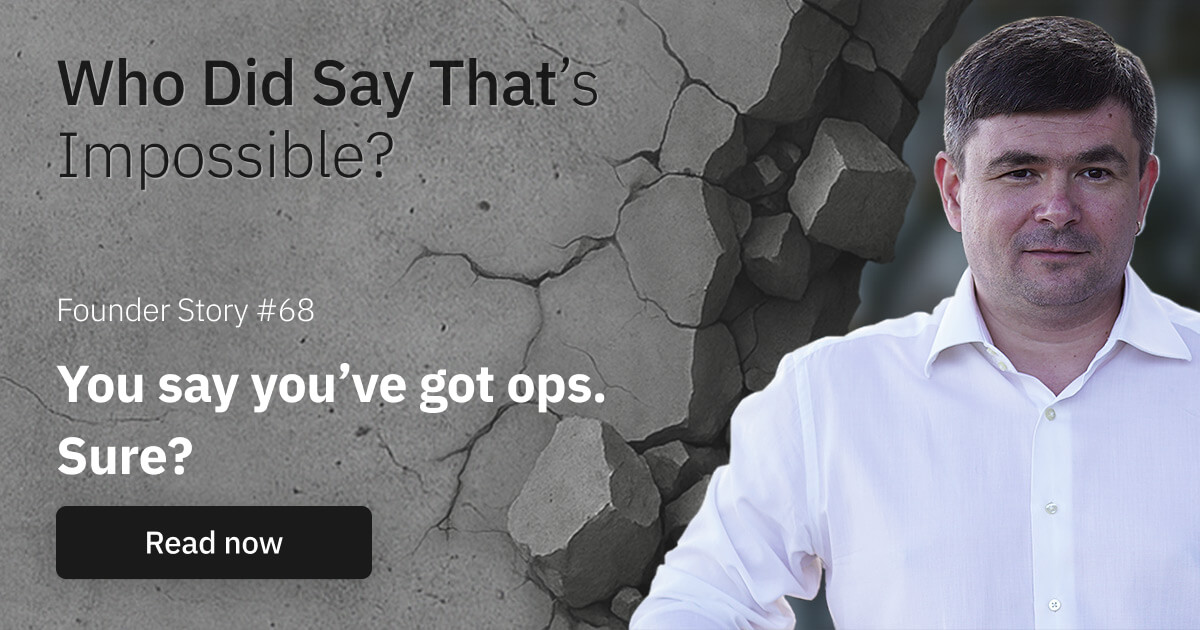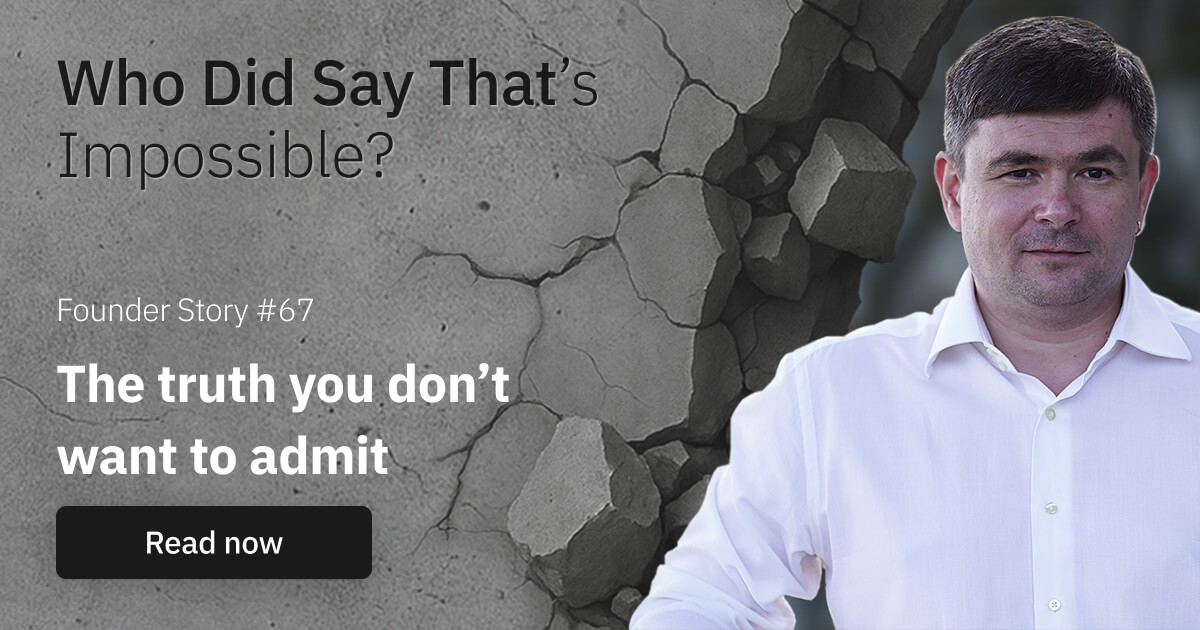Why optimization never ends (and why that’s good)
Or minute of making peace with the unfinished
Think your business just needs “a few final tweaks”?
I thought so too — until every “final tweak” opened another layer of truth.
When I first started my agency, I believed there would be a finish line. A day when the systems were polished, the team was self-running, and the fires finally stopped. When I could exhale and say, “We made it.”
That illusion carried me for years. Because early on, the chaos feels noble. You’re building something out of nothing. You’re in the arena. And the messy middle feels like a badge of honor.
But eventually, you start craving calm.
You want things to work. You want to wake up and not feel like the entire company rests on your inbox. So you start fixing things. You optimize. You document. You hire. And for a moment, maybe a month or two, it feels like peace.
Then something breaks. A key hire leaves. A market shifts. A client disappears. Or your “perfect” system starts producing weird side effects — bureaucracy, confusion, inefficiency disguised as order. And suddenly you’re back in it, wondering why stability always slips away.
The truth I fought for years
I’ve lived through almost every flavor of chaos a founder can meet, from the 2008 crash that wiped half our pipeline, to blocked accounts, layoffs, and even evacuating staff under literal shellfire.
And through all of it, one pattern kept repeating: every time we reached stability, something new emerged to challenge it.
Not because we were failing, but because growth itself creates friction.
The business grows. Markets evolve. People change.
And your systems, as brilliant as they once were, quietly start to decay the moment you stop updating them.
It took me almost two decades to accept this:
There is no “done.”
Even the most elegant structure demands constant calibration.
A business system isn’t a monument. It’s an engine — alive, noisy, and always in motion.
The moment you stop maintaining it, entropy takes over.
The perfection trap
For years, I saw that truth as a punishment. I thought, “So I’ll never rest? Never be finished?”
That’s the planning fallacy whispering, the illusion that someday you’ll “get to it later” when things calm down.
But things never calm down.
And that’s good news.
Because once you stop chasing finality, you stop judging yourself for the mess. You start seeing optimization as stewardship, not failure.
Even when I had a full-time COO, someone I trained myself, who built our processes, ran audits, and kept the engine humming, we still sat down every quarter to ask:
What’s breaking next?
Not “what’s broken,” but “What’s breaking.”
Because by the time a problem is visible, it’s already expensive.
That mindset changed everything. Instead of reacting, we learned to design. Instead of firefighting, we practiced engineering.
The founder’s paradox
You build systems to gain freedom. But those same systems still need you, just not as the operator.
You become the architect. The one who looks at the blueprint, not the bolts.
That’s the healthy version of control.
Because no matter how strong your structure is, it will always need periodic re-alignment — new constraints, new rhythms, new people.
And if you’re lucky enough to reach the stage where everything seems calm, that’s not the time to relax. That’s the time to review, upgrade, and prepare for the next cycle.
Complacency, not chaos, is what kills operational maturity. Even a perfectly systemized business can rot from comfort.
The bureaucracy you mock in corporations? That’s just optimization left unattended for too long.
Small founders don’t face bureaucracy, they face stagnation disguised as stability.
Why this matters
When I look back at my own journey, from one designer with a dial-up modem to 80 people across three continents, what I’m most proud of isn’t scale. It’s that the business stayed alive. Through every storm, we adapted. We redesigned. We learned.
And that’s the point.
Optimization never ends because evolution never ends.
You don’t build a perfect machine. You build a living organism that learns, breaks, and grows.
Once you accept that, the stress softens.
You stop fearing the next problem and start seeing it as the next iteration.
That’s what real operational maturity feels like.
Calm in motion.
- Eugene
Join the “most offbeat” Businessletter on entrepreneurship.

Hi, I’m Eugene.
Over the past 20+ years, I’ve grown an international agency from one-person freelance to a multimillion-dollar business. I’ve led teams, scaled systems, burned out, rebuilt, and learned (the hard way) what it really takes to run a business that doesn’t consume your life.
I help them make sense of complexity, design simple systems, and create the kind of business they actually want to run.
More Stories
Founder Stories

Why optimization never ends (and why that’s good)
Or minute of making peace with the unfinished

You say you’ve got ops. Sure?
Or minute of realizing you’ve been duct-taping your business for years


